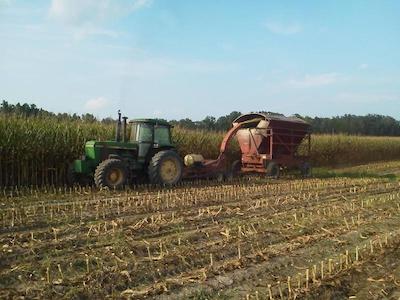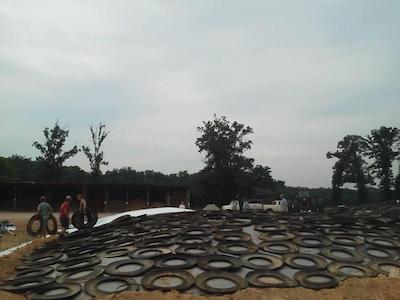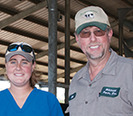
It is Corn Silage Harvest 2023 here at Hillcrest Farms. This year we have been blessed with rain and a good corn crop. We are so thankful for this because last year’s corn crop did not yield as well.
It was also very low in starch and just didn’t turn out how we had hoped. We are currently feeding that silage to our cows, and it definitely shows that the nutritional content was not as good. So, we are excited to ensile this year’s successful stand of corn. We will let it ferment for the shortest amount of time possible and then open it up and switch the girls over to it instead of what they have been eating. We will take what is left of the older corn silage and feed it to heifers and dry cows.

Silage time is always hectic here. It is long hours and hot days as we rush to get it all in the silage pits quickly and make sure it is packed well while doing so. We usually hire a few seasonal drivers during this time which helps, because it gives us enough time to get our everyday stuff done as well.
We try to cut our corn when it close to 36% dry matter. We use pull-type forage harvesters. They throw the chopped silage into a large wagon and then the wagon, when full, will dump into a dump truck. The dump trucks bring the silage to the large, in-ground pits where it is then dumped, spread out, and packed down all at once. We keep diagrams of which fields are in different layers and parts of the pits. This helps us look back and see if we go up or down in production when we are changing fields in the pits.

Normally we do three types of silages a year: corn, ryegrass, and sorghum. Corn usually takes two to three weeks to harvest, ryegrass one week, and sorghum a few days. All our other commodities are bought and mixed with these forages to make a total mixed ration for our cows.
Happy harvesting!

Mark and Caitlin Rodgers are dairy farmers in Dearing, Georgia. The Rodgers have a 400-cow dairy that averages 32,000 pounds of milk. Follow their family farm on Facebook at Hillcrest Farms Inc.








